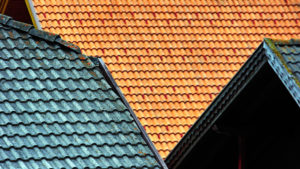Roof Inspections
Exposure to the elements takes a toll on our facilities, especially our roofs. Regular maintenance will save you money by extending the life of the roof. In addition, roof maintenance will help prevent collateral damage that can occur to other parts of your facility when your roof is not properly maintained.

Regular Inspections
Inspections are key to catching a problem before it gets out of hand. Maintenance personnel should inspect your facilities roofs twice a year –once before the winter when the weather is most severe, and once after, to ensure the roof was not damaged by cold, snow and ice. FEMA advises looking for the following signs that your roof may be in need of repair:
- Cracked or split wood members
- Noticeable sagging of any kind
- Bends or ripples in supports
- Cracks in walls or masonry
- Sheared off screws from steel frames
- Sprinkler heads that have dropped down below ceiling tiles
- Doors that pop open
- Doors or windows that are difficult to open
- Bowed utility pipes or conduit attached at ceiling
- Creaking, cracking or popping sounds
Flashing
Flashing is the material used over joints in the roof to prevent water seeping in and causing damage. It’s used in areas that are especially likely to leak. Don’t forget to examine the flashing when you do your roof inspection. Look for damages and cracks, as well as shrinking sealant around the edges of the flashing. Replace if necessary.
Gutters and Downspouts
Inspect the gutters and downspouts and clean them regularly, especially after the autumn. Leaves and other debris can clog them, causing rain-related issues. Also, check that gutters are properly affixed to the structure and won’t tear away in high winds. Make certain downspouts are directing rain water away from the foundation of the building.

